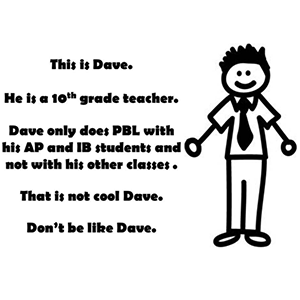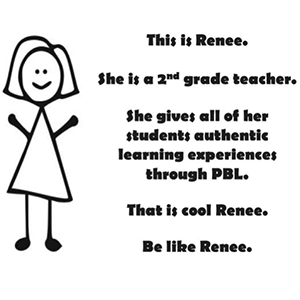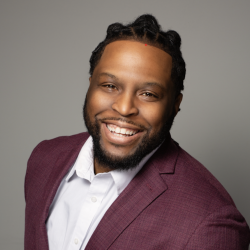
I had the opportunity to sit in on a PBL breakout session recently at an education conference. The workshop presenter inferred PBL could only work for students who were advanced in learning and/or talented and gifted (TAG). I sat there stunned trying not to cause a scene. As the presenter shared justifications, I began jotting down a few counter statements.
Non-TAG students don’t have the discipline like my TAG students do.
I wonder if those educators would consider using some of the student forms and management ideas to inspire what it takes to start, work and complete a project? Students can learn pacing strategies and self-management ideas through PBL by teachers teaching and modeling. PBL is innovative in nature because it concentrates on developing critical thinkers by engaging students in more authentic learning that requires solving real-world problems… collaboration, and effective communication. (Hemmings, 2012) Yep, I wondered if those educators would be willing to consider the research?
I gave them a project to do and the entire class didn’t do it. A few who did brought back very low quality work and their final products looked just like the example I showed them.
PBL isn’t a show and tell model where you tell them it should look like your idea and students create a product at home that mimics your creativity. The beauty of PBL is about learning and exploring strategies using 21st century skills connecting them to authentic experiences. Creating inquiry and discussion in your classroom then providing students work time to develop their thoughts establishes that climate of learning. Using a variety of strategies further develops opportunities to refine thinking. If everyone’s final product starts to look the same, provide reflective opportunities to discover why they all look the same (for students and teacher), then critique/revise. Any student can do that with support and guidance! Remember, PBL is about the process not the product.
You must not have seen my students! They are years behind and I’ve got to get them ready for the standardized tests.
You are correct, I haven’t, but let’s look at the research. PBL works for ALL students and research supports how PBL improves student achievement and can even raise standardized test scores.

With proper planning and support for your students, you can implement PBL at any grade level, with any group of students (advanced or “not there yet”) and still prepare them for those standardized tests. From Pre-K through grad level courses, students have been successfully doing PBL, no matter how far behind or ahead they have been.
The parents ended up doing the projects.
Yes, parents sometimes take over when there aren’t clear expectations and communication. I wonder if communicating to parents at the beginning of the project with a parent letter could have been helpful? In one instance, a school had a launch for the parents and passed out a short booklet (parent guide) to PBL. Other schools have used the apps, Bloomz and Remind for digital communication to share transparency and progress throughout the project. There are also a few more ways for parents to support their students during projects. Other teachers had parent meetings providing questioning strategies (see #2) so they wouldn’t take over.
My class wouldn’t work together and argued constantly. My TAG students didn’t.
Here is a great article on turning student groups into effective teams. Have a community expert visit to share how collaboration and communication matters in any professional work space. Try project team contracts, and work plans to establish a positive PBL culture. Here is a video sharing strategies and a video what collaboration and high quality work looks like from different perspectives. Conversing and practicing how to work together is definitely a career ready skill.
My students were distracted when they got up from their seats so I kept my desks in rows. That kept them on task and the noise down. My room was known as the quiet room.
I wondered how the group work was managed? Was the presenter walking around the room engaging in discussion with each group or was the presenter sitting at the desk playing Candy Crush on the phone? PBL noise happens. It’s a good thing inside of a classroom when students are engaged and as long as the teacher is the facilitator of learning actively engaging inquiry and discussion. You can make your PBL classroom a thinking space where discussion is rich. PBL isn’t “Go do while I sit here.” There are classrooms building gardens to feed communities. High school students becoming engineers designing products. That process is noisy but on task which involves breaking away from the controlled silence of traditional settings. I wondered if the presenter would shift the control of the class in order for PBL to be successful?
I tried to hold my peace but by the end of the workshop, everyone understood how I felt about PBL for all students. PBL is not just for talented and gifted students. It’s for everyone!
Follow Andre Daughty on Twitter at @andredaughty

